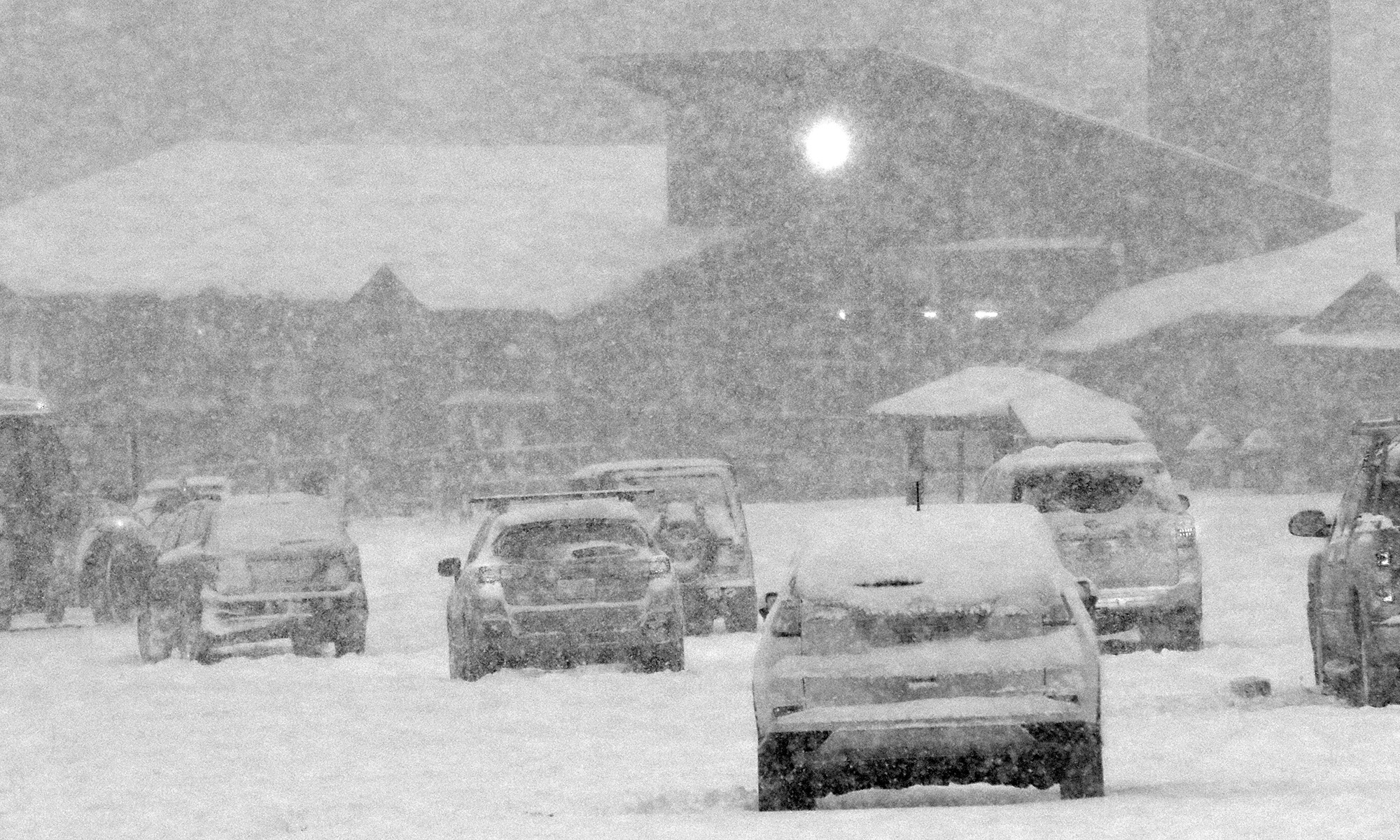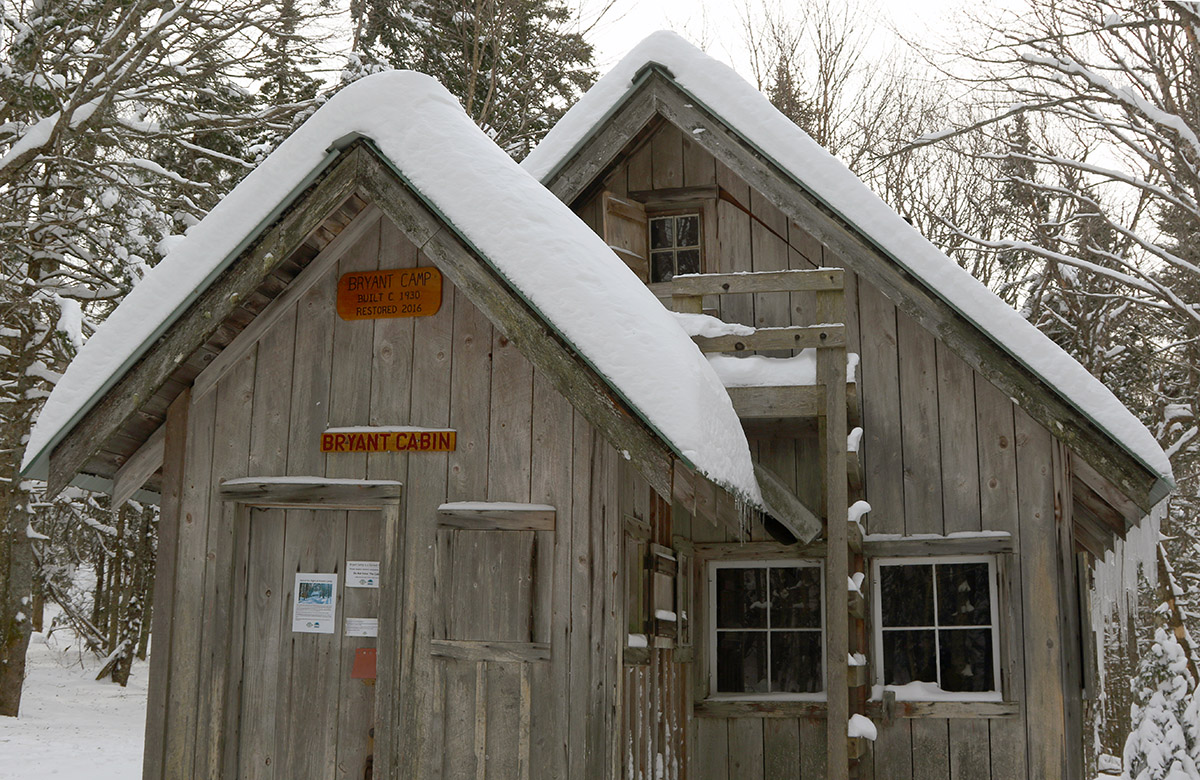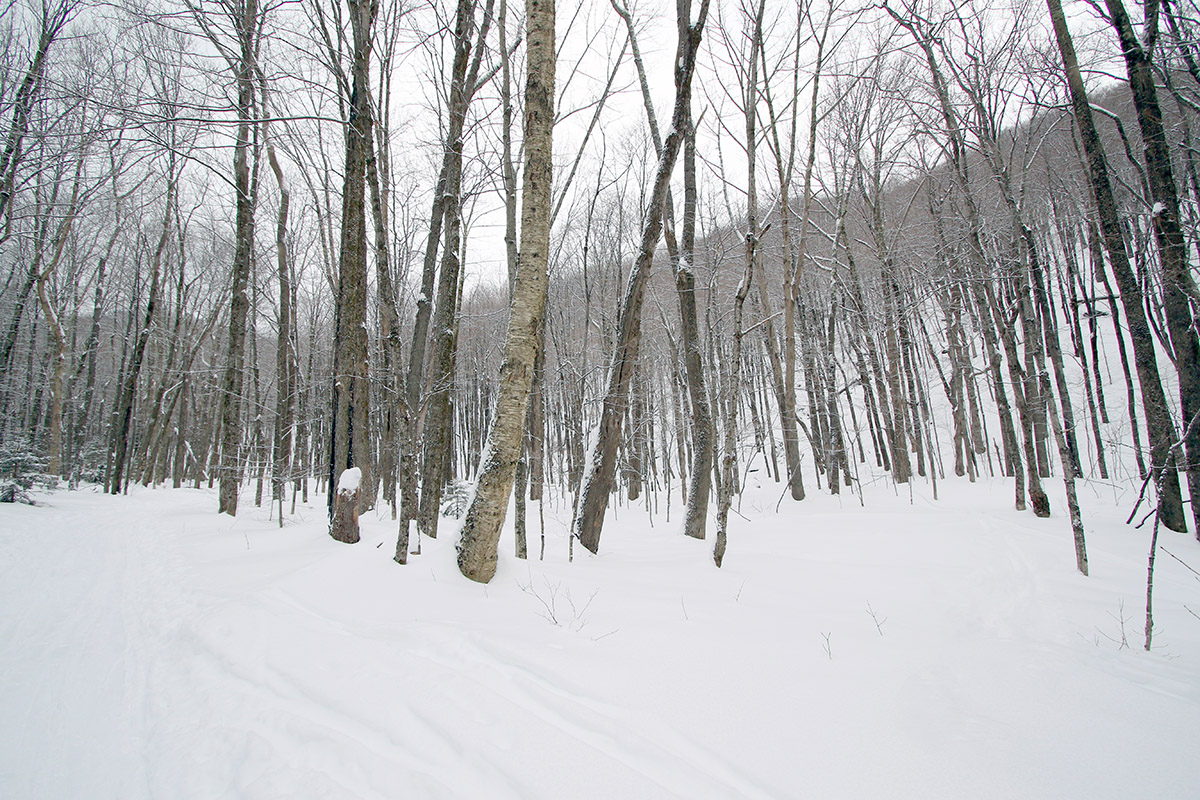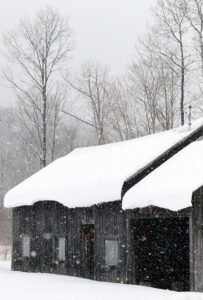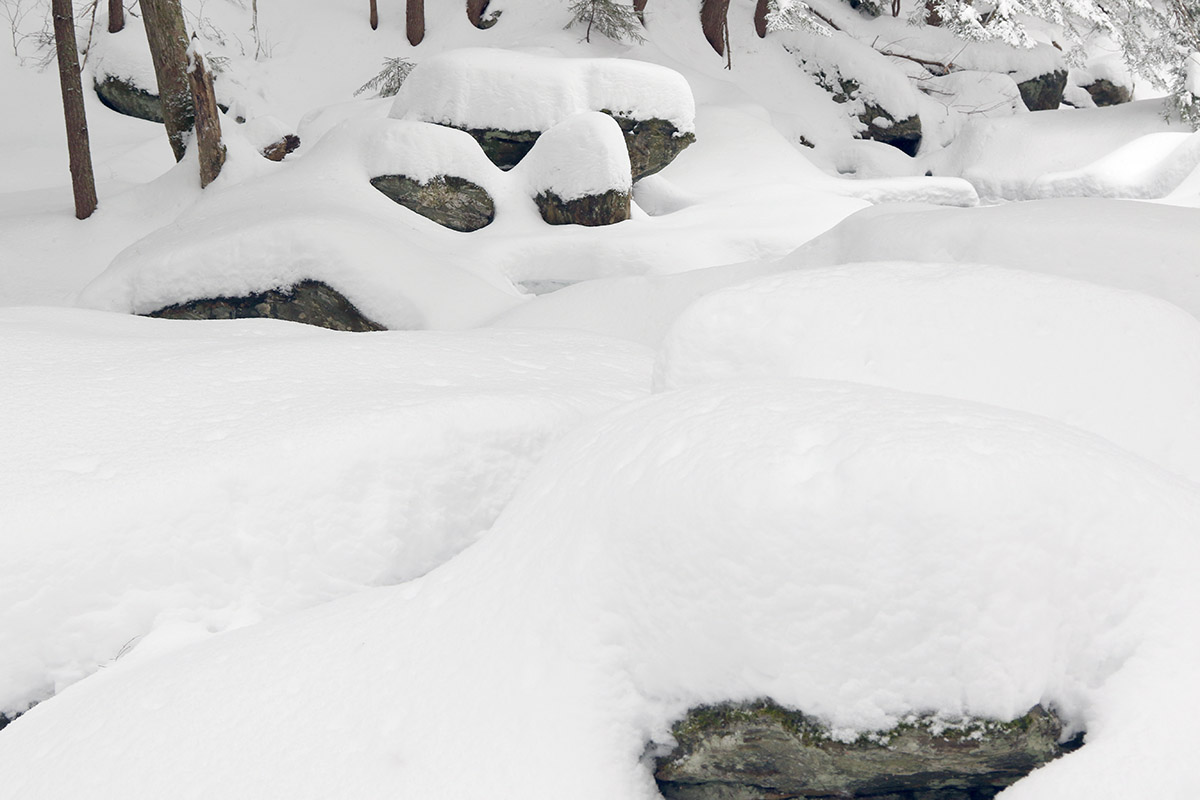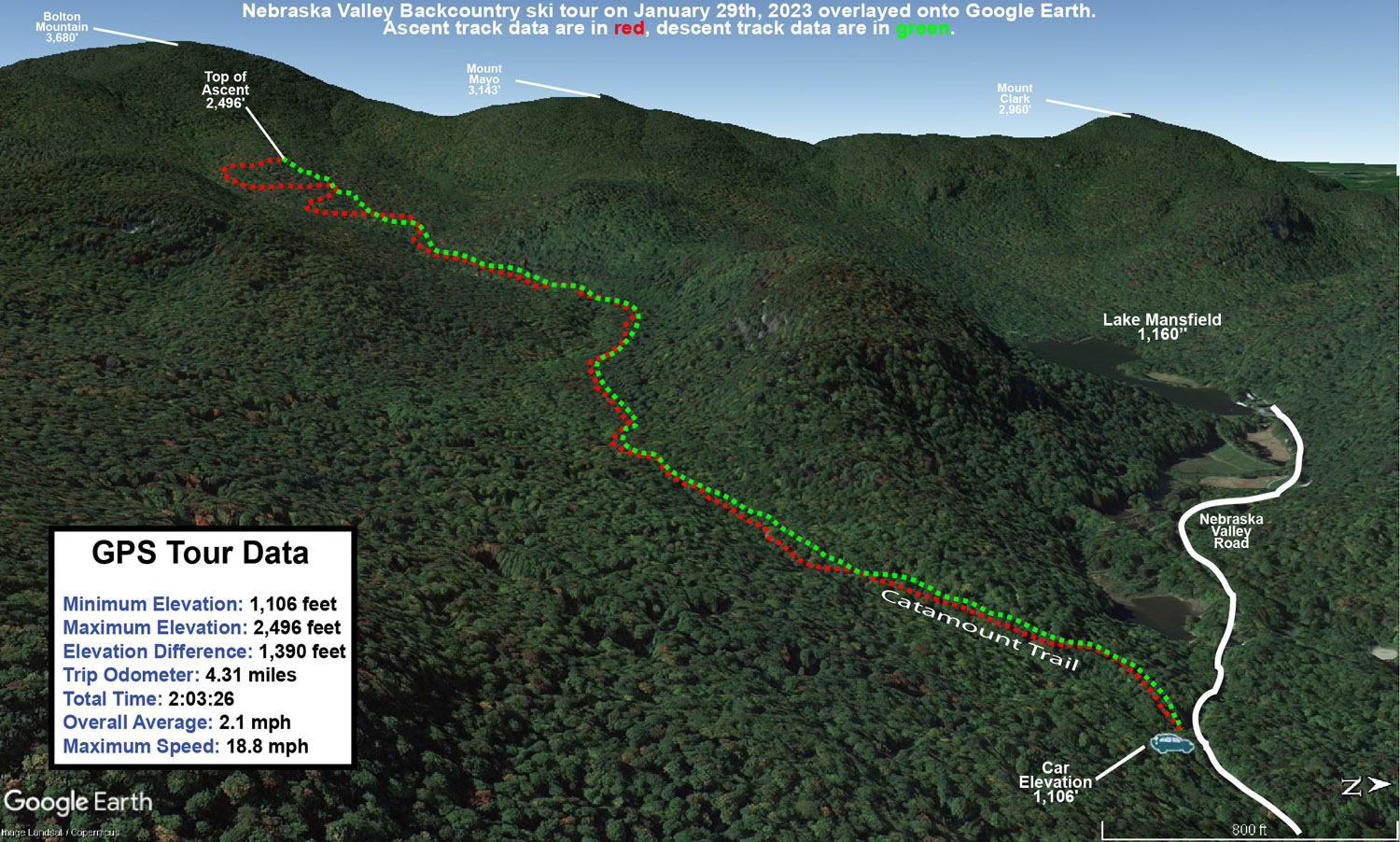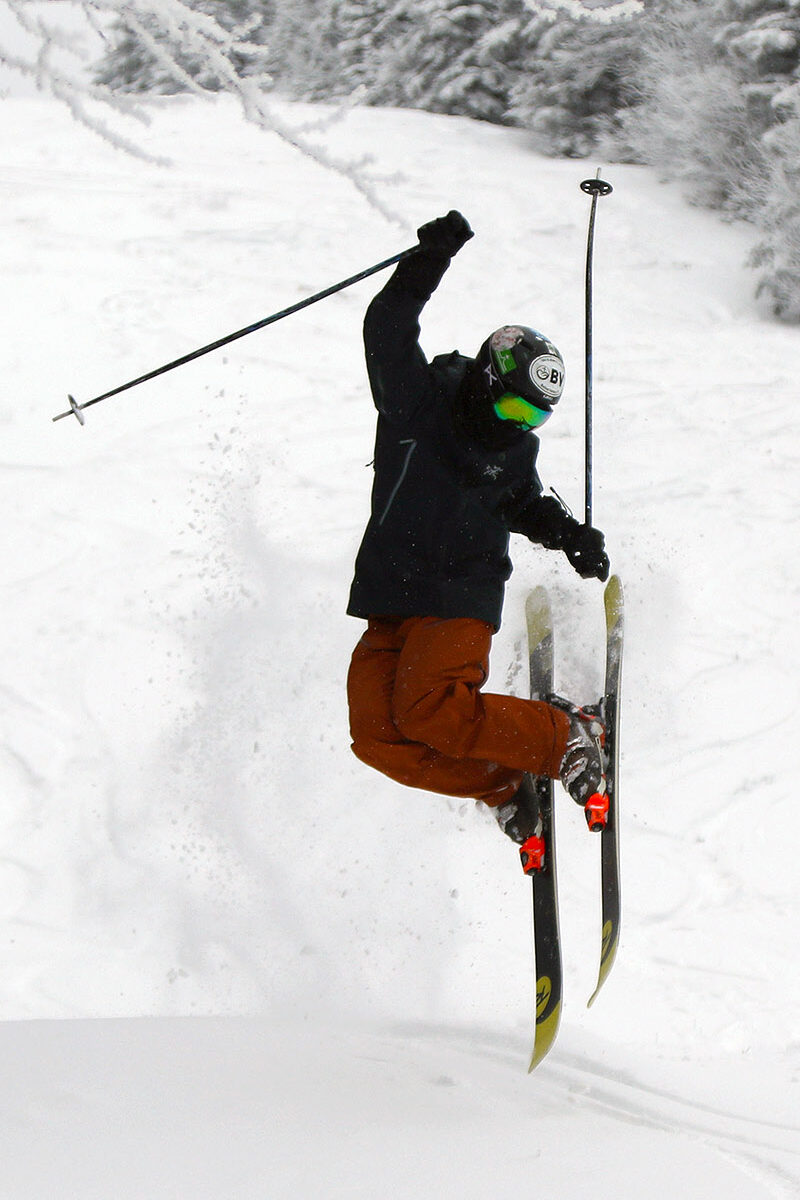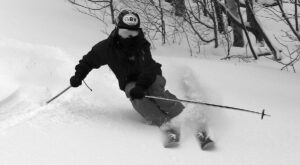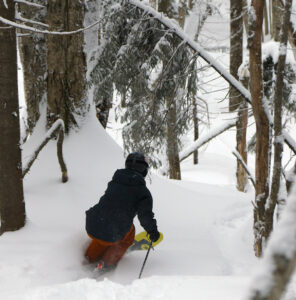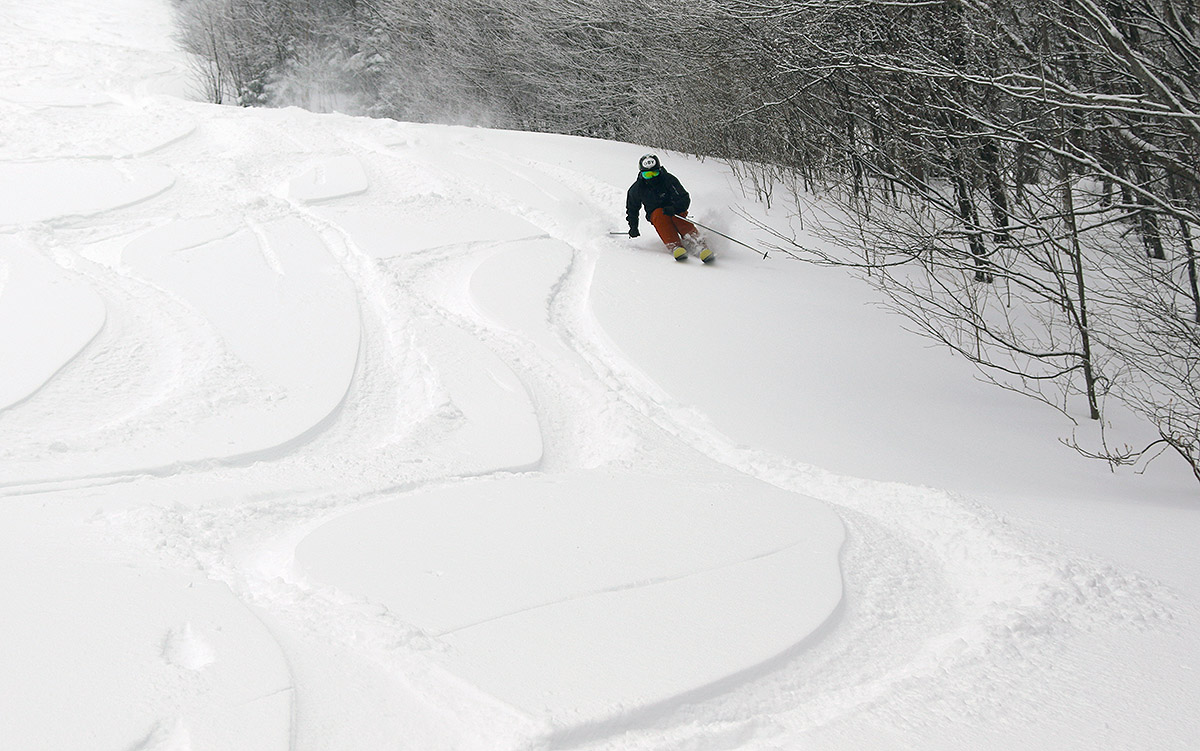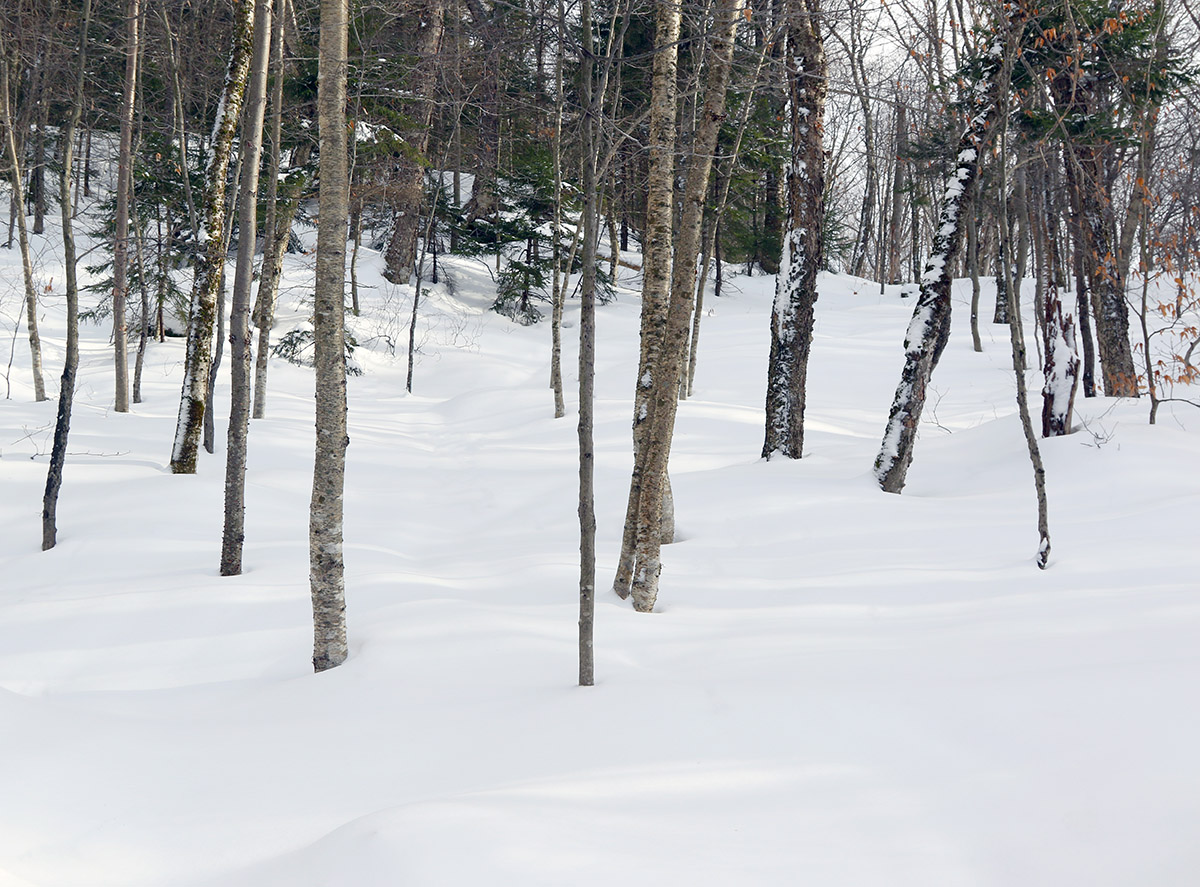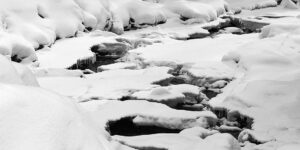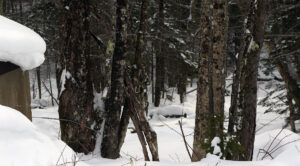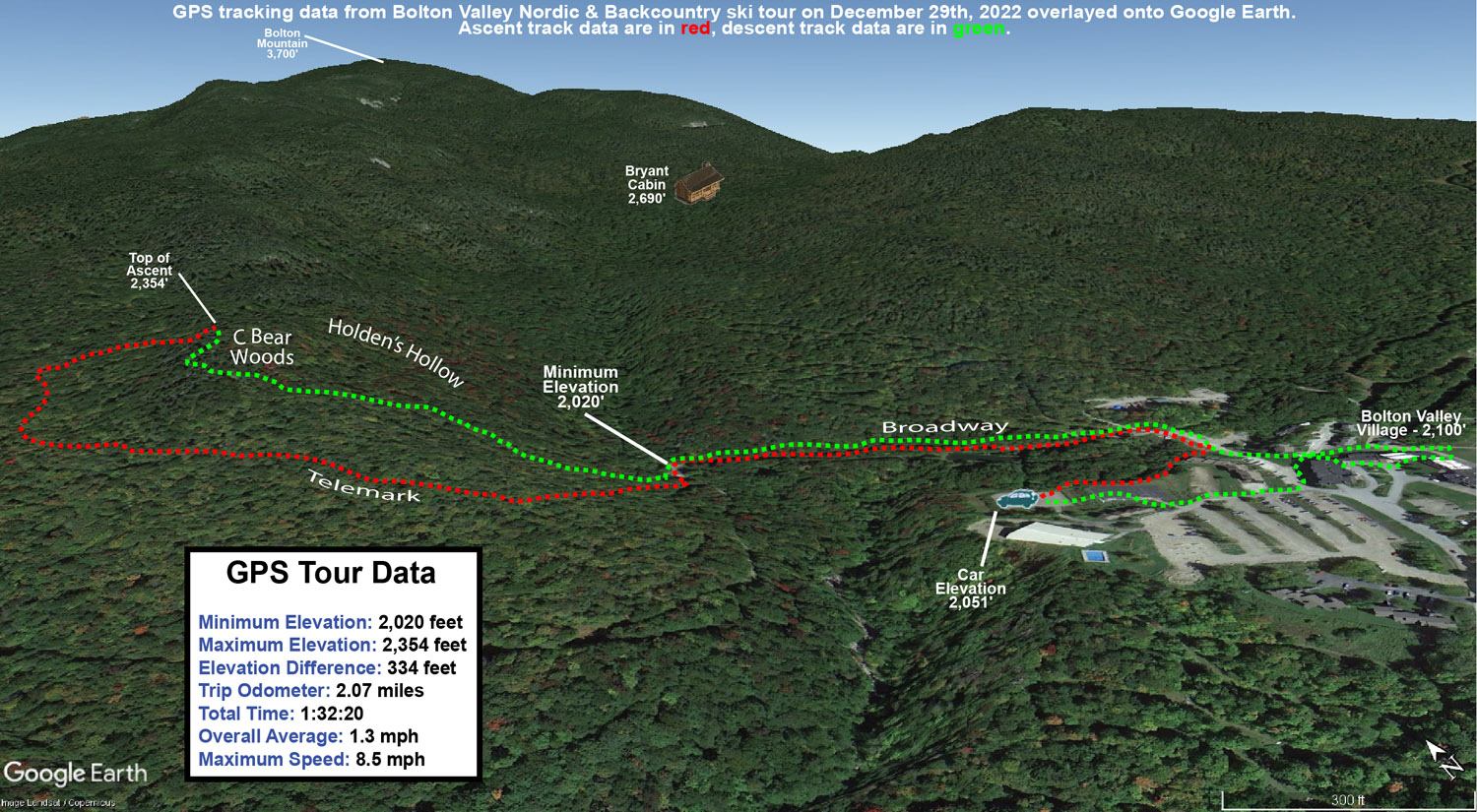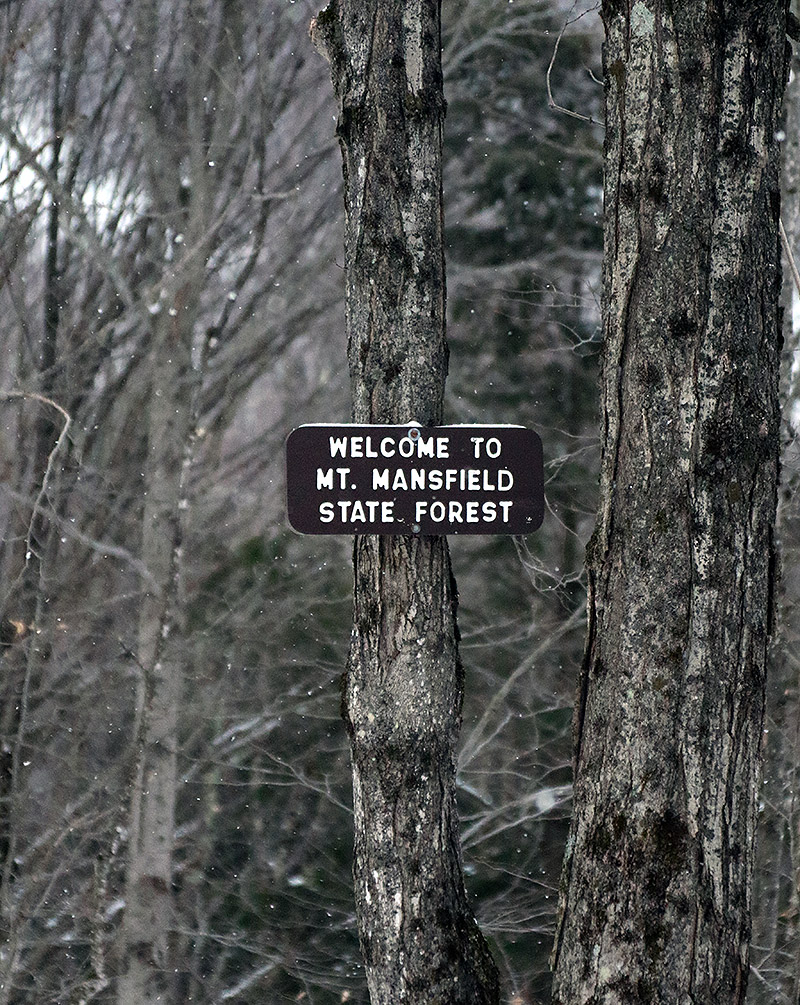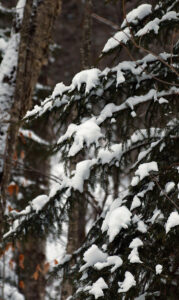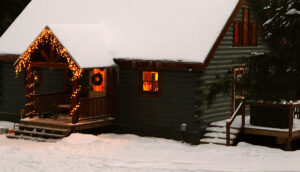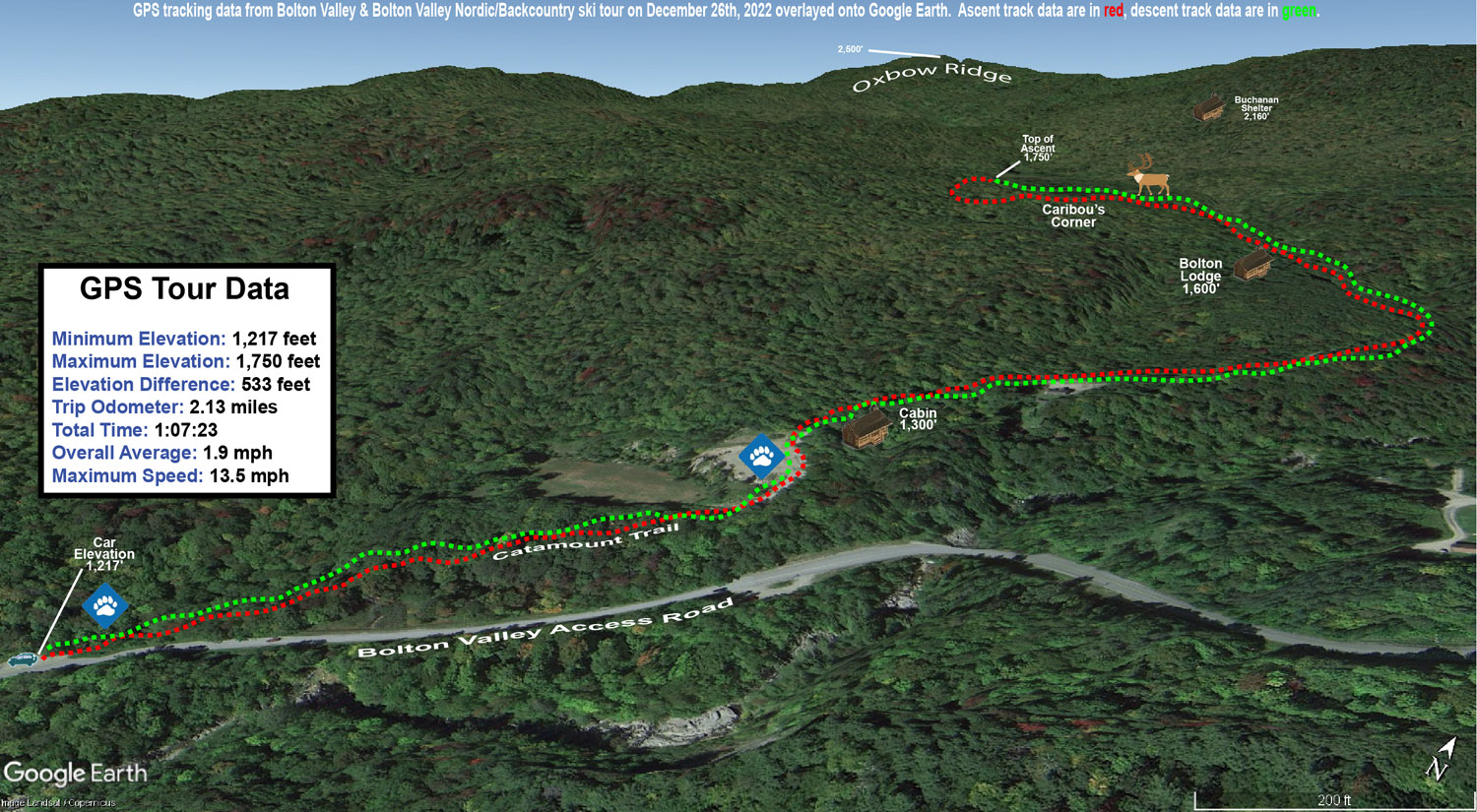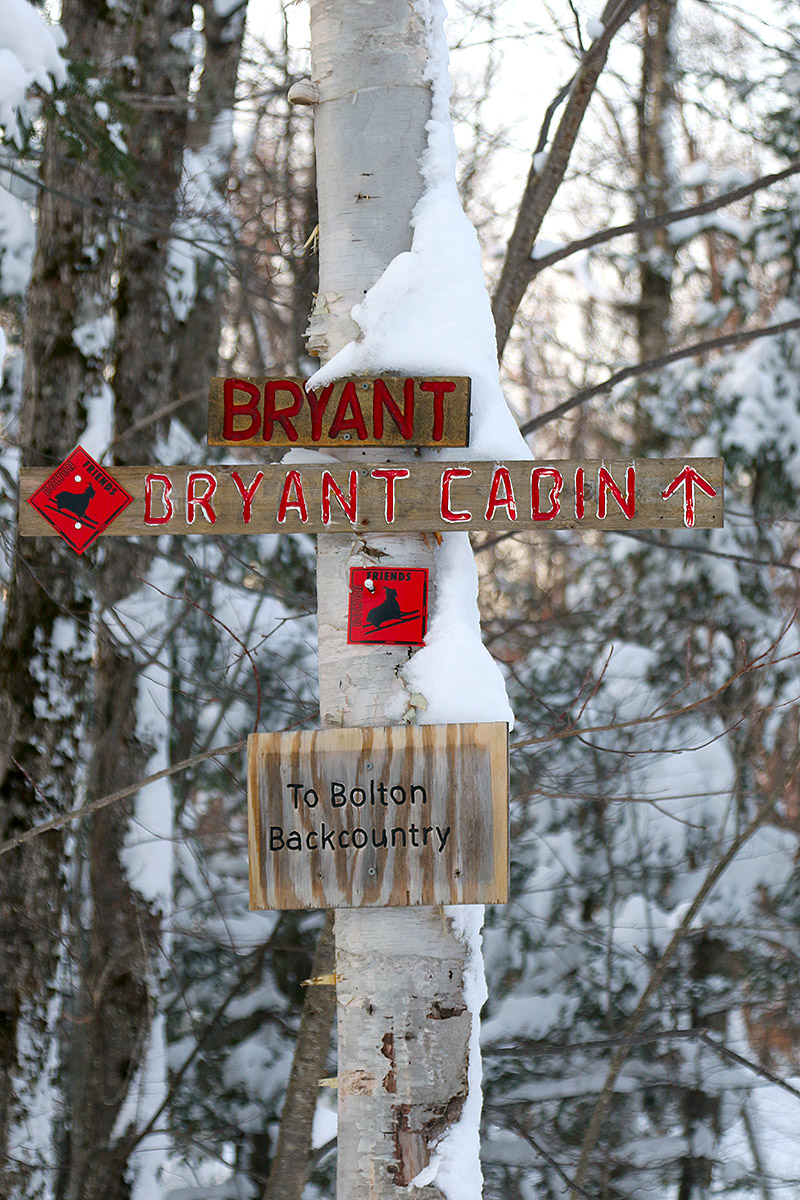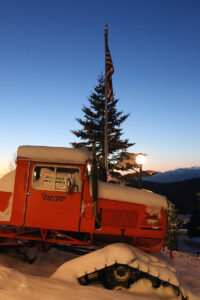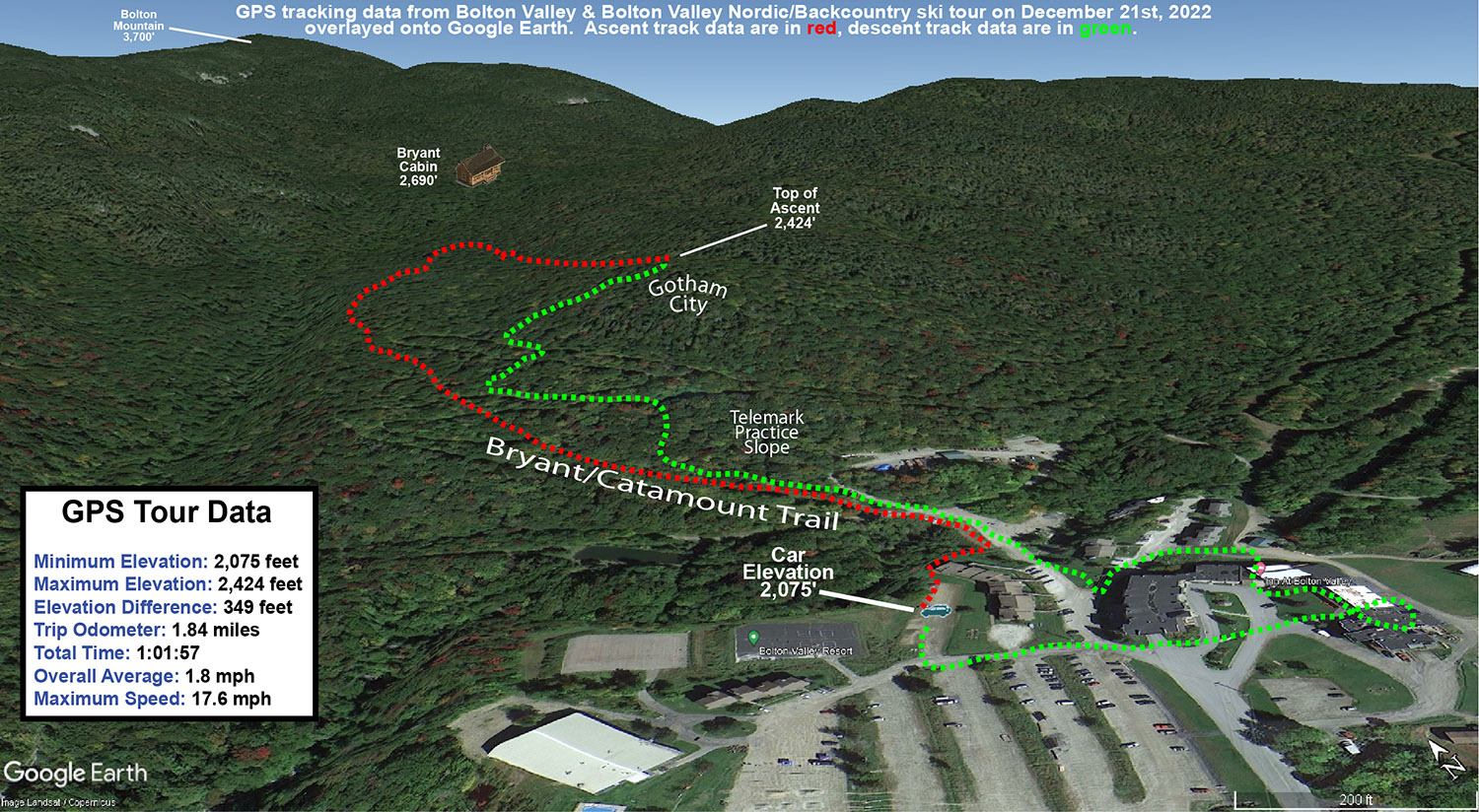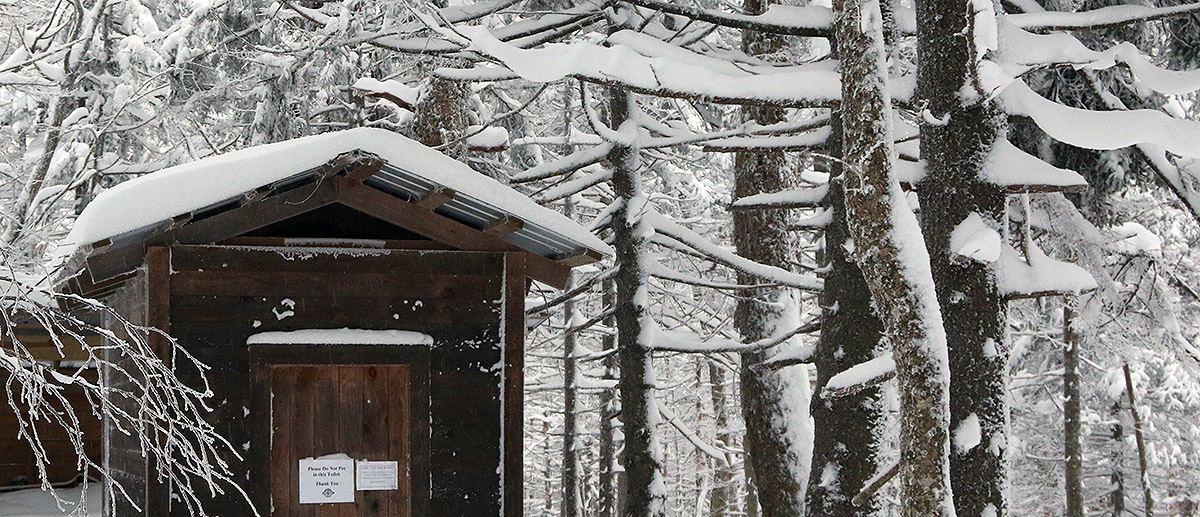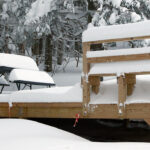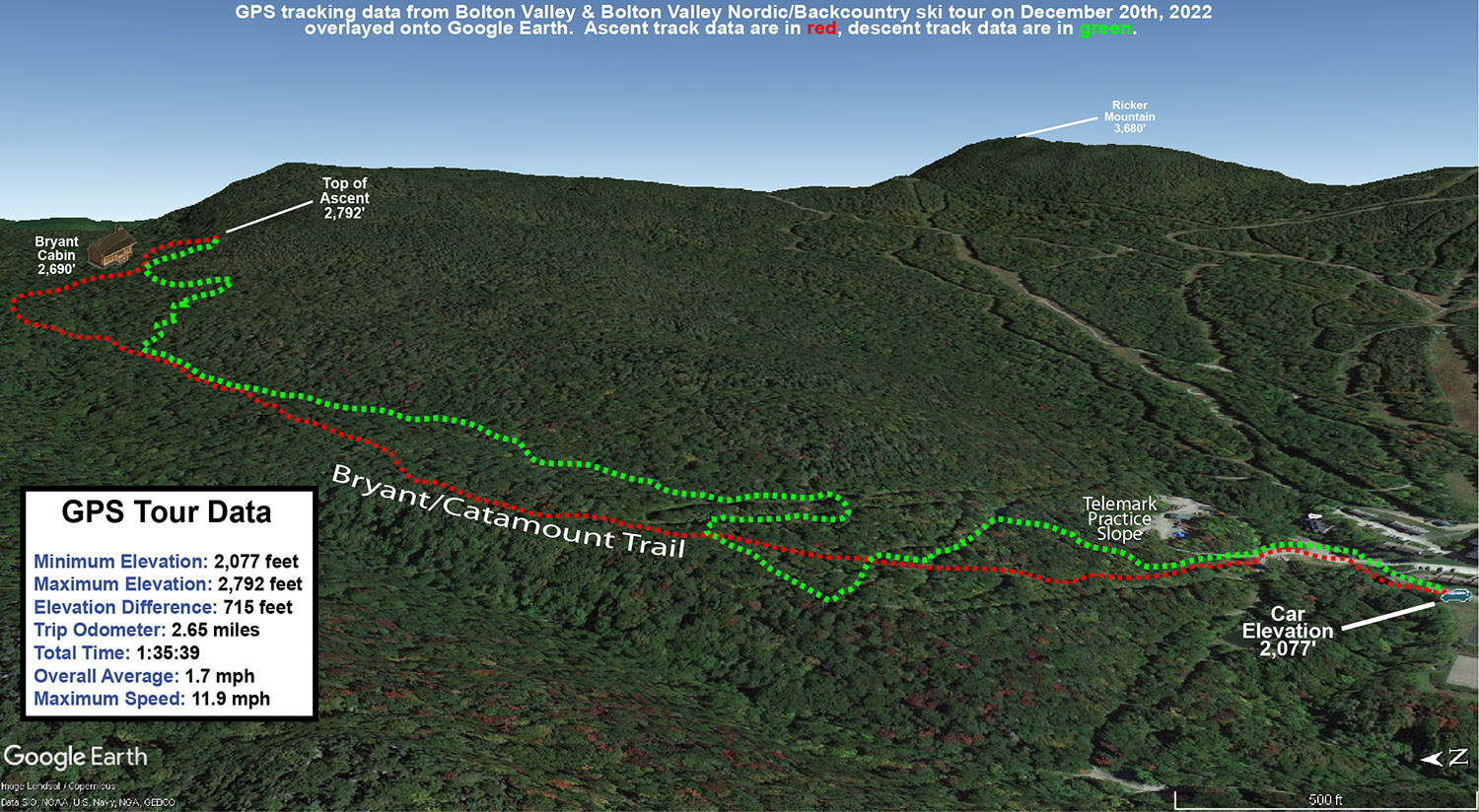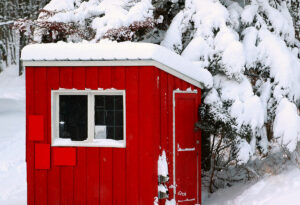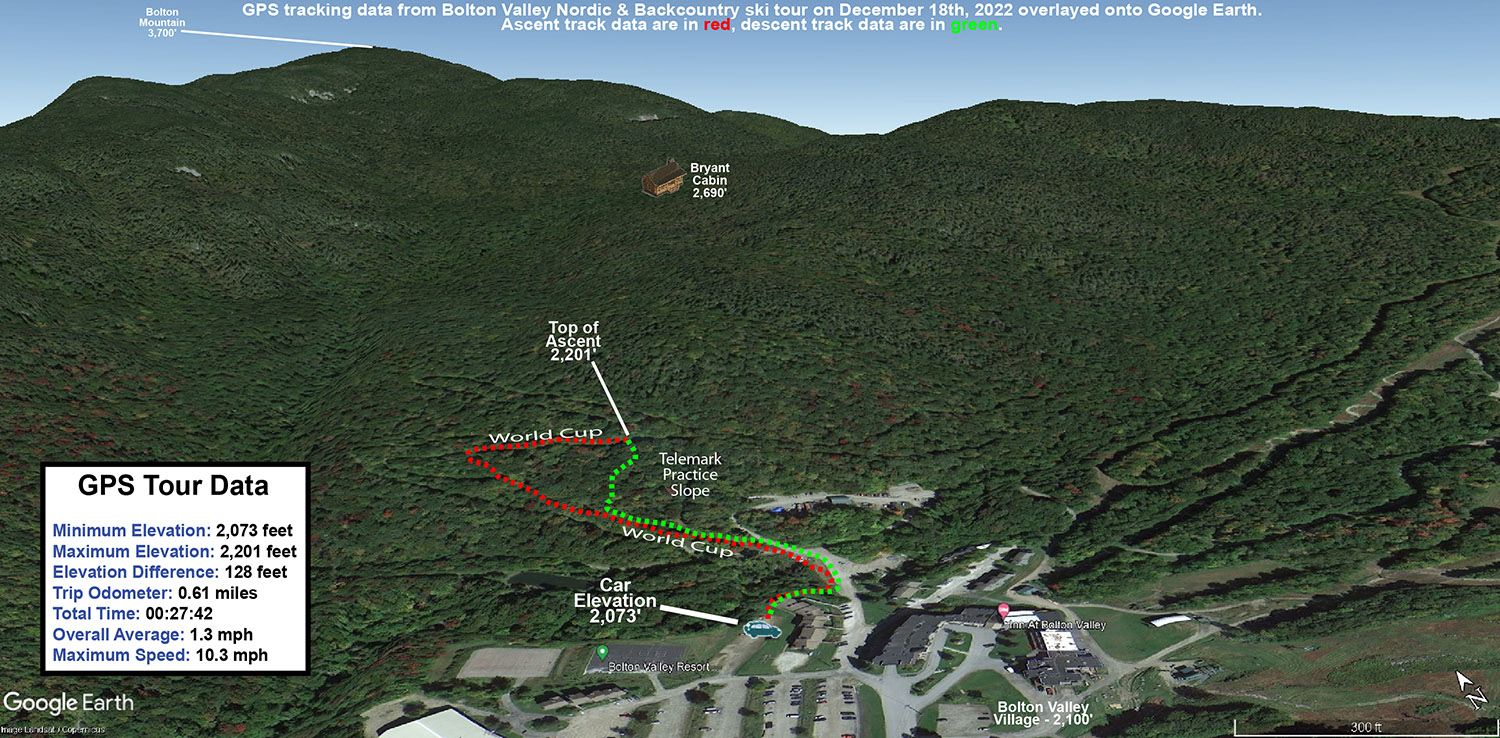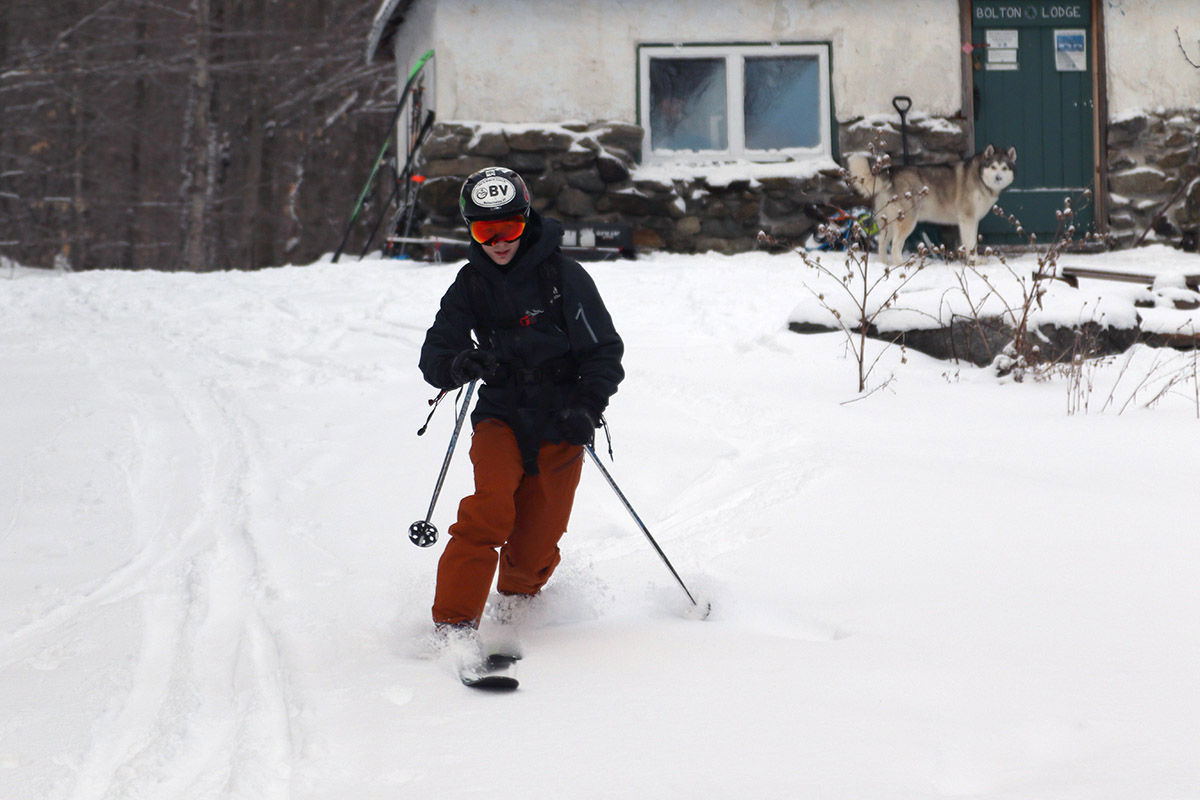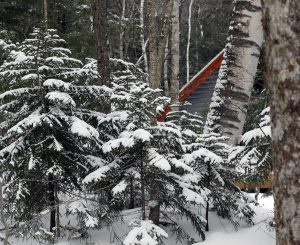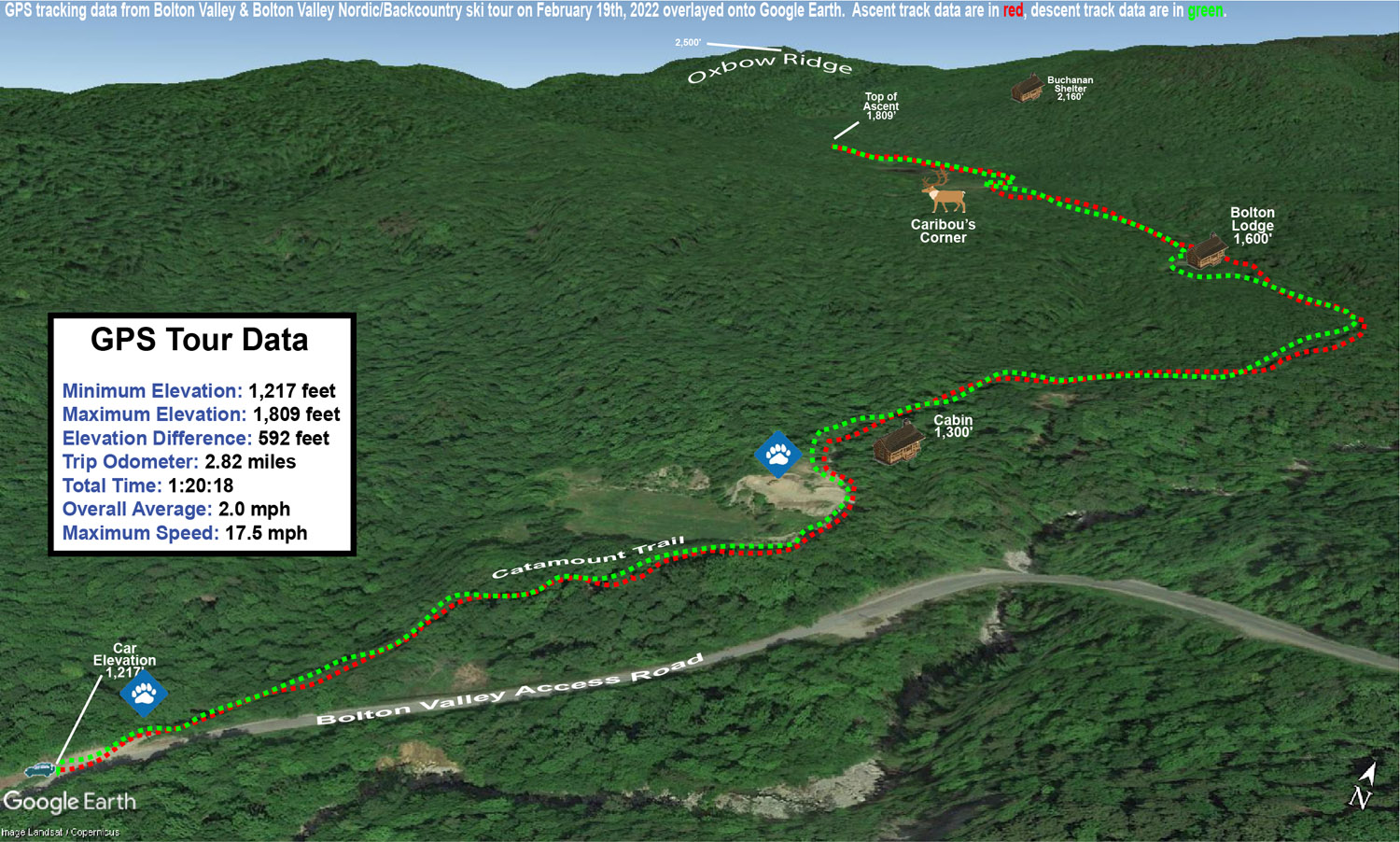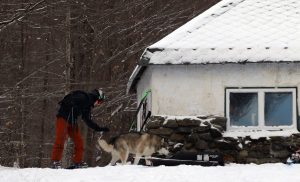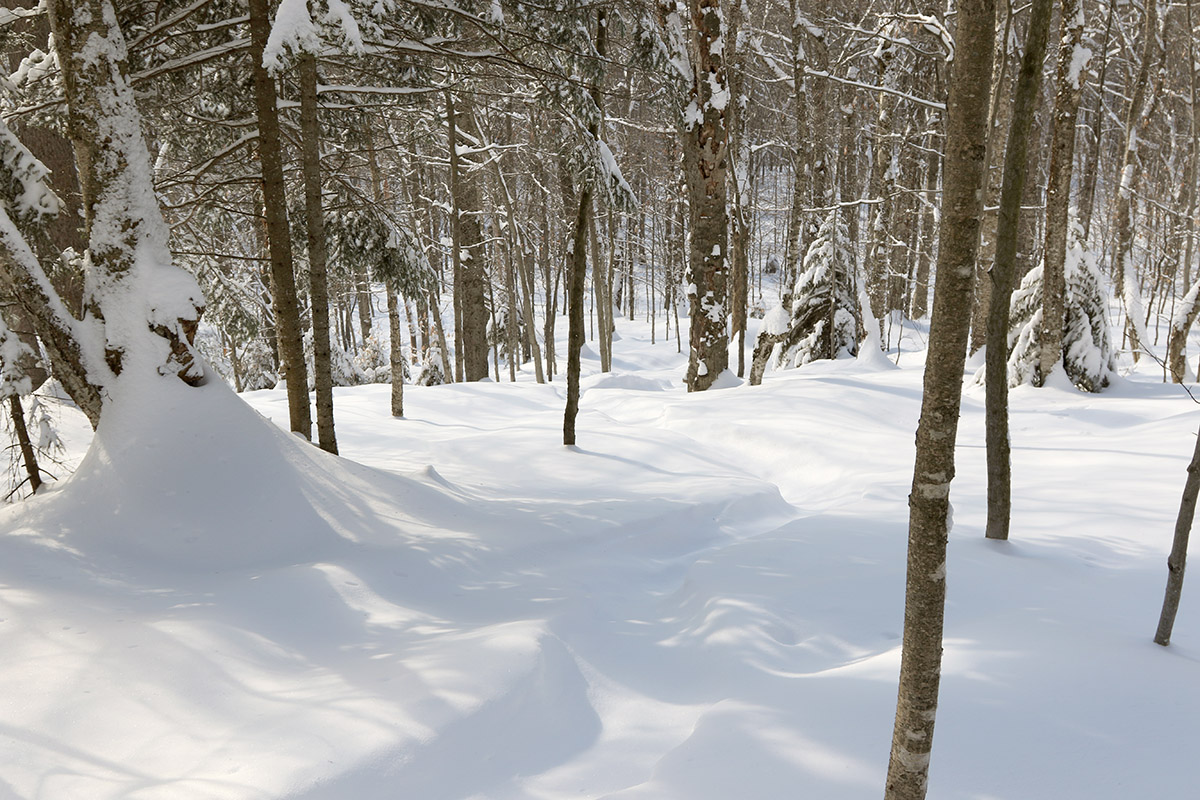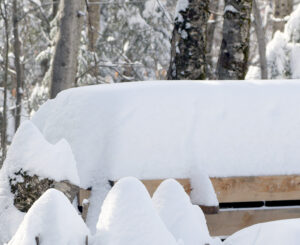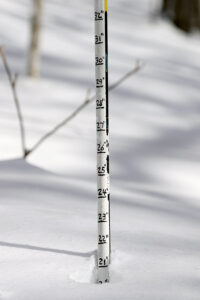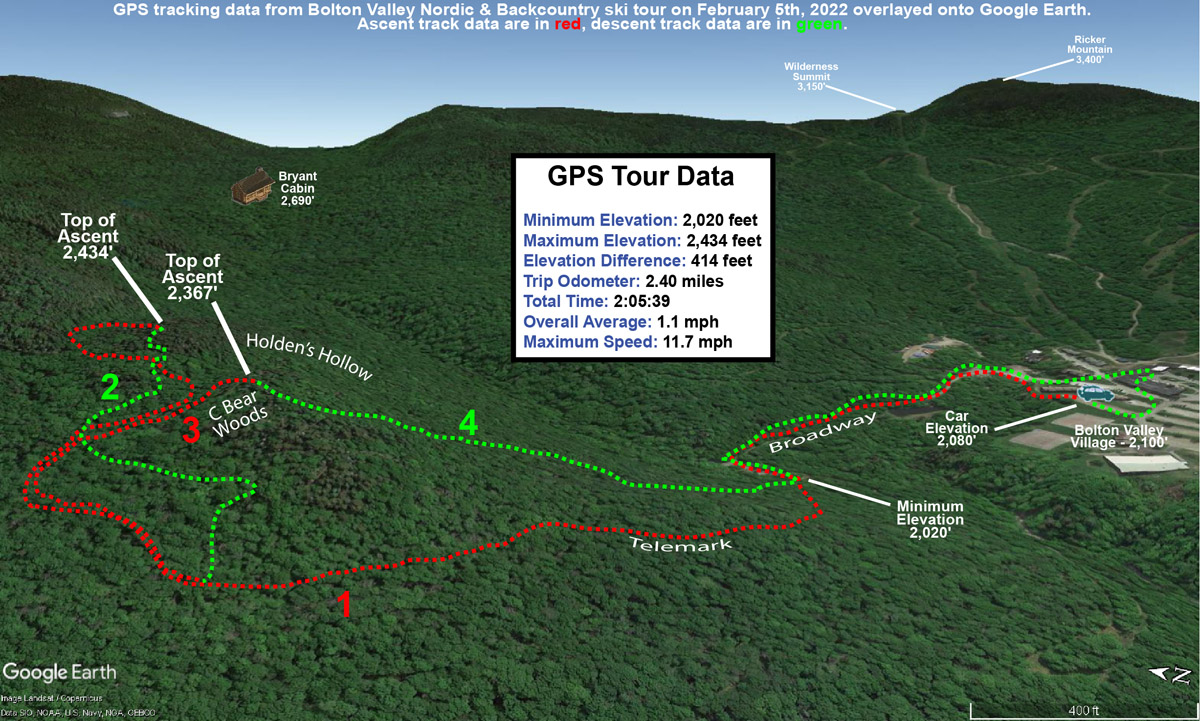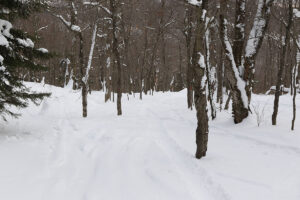
I hadn’t been out for any turns since last Sunday when I toured in the Nebraska Valley, so I was eager to see what the mountains had to offer yesterday once the arctic cold departed. At the end of my tour last weekend, temperatures had risen above freezing in the lower elevations, and then we had those potent winds with the arctic front, both of which could have been insults to the quality of the snow surfaces.
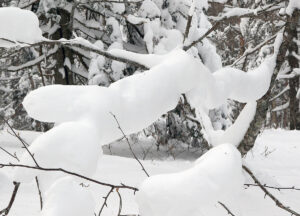
Today my plan was to keep my skiing fairly simple and close to home, and I decided to tour on the Bolton Valley Nordic and Backcountry Network. I figured I’d tour up to Bryant Cabin, check out the snow quality, and decide from there if I was going to go any farther. I was brining minimal camera gear for this outing, so I borrowed Dylan’s backcountry ski pack instead of using my larger one, and I opted for mid-fat Teles instead of going with full fats. I was definitely feeling light and fast with that setup, and hit Bryant Cabin in under 30 minutes, so I felt that I easily had time to extend my tour. In addition, the quality of the snow was far better than I’d expected. We haven’t had a major storm cycle since Winter Storm Kassandra about a week ago, so I didn’t really expect the powder to be very fresh. Those concerns were sidelined right at the start of my tour though – I did numerous depth checks on my ascent, and even down at 2,000’, the surface snow was 15-20” deep above the base. Whatever warming had taken place last weekend was clearly below the 2,000’ elevation range. I’d heard secondhand that the freezing level was somewhere down around the Timberline Base (1,500’), and I guess it never rose much higher than that. The other concern about the snow had been the effects of the wind, but any drifting and wind crusts were few and far between on the terrain I covered up to Bryant Cabin and beyond. I ran into many areas where the trees were just caked and choked with upslope snow clinging to every branch at various crazy angles, and snow doesn’t stay like that when it’s been hit by heavy winds.
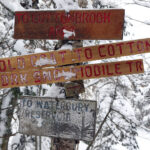 Finding the snow quality so impressive, I actually decided to continue my tour all the way up to the top of the Catamount Trail Glades around 3,000’ and the powder just kept getting deeper. Estimates of surface snow depths that I found on my tour were as follows:
Finding the snow quality so impressive, I actually decided to continue my tour all the way up to the top of the Catamount Trail Glades around 3,000’ and the powder just kept getting deeper. Estimates of surface snow depths that I found on my tour were as follows:
2,000’: 15-20”
2,500’: ~20”
3,000’: 20-25”
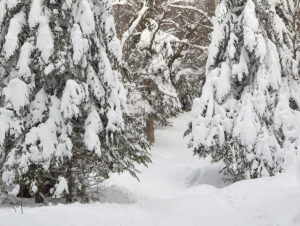
Untracked areas up in the Catamount Trail Glades were two feet of bottomless powder, and you could easily be fooled into thinking we’d just had a major storm cycle in the past couple of days, not a week ago. For the rest of my descent I headed down past Bryant Cabin along Gardiner’s Lane and North Slope, and finished off with a connect to Wilderness via Alchemist. The conditions on Alchemist were perhaps the biggest testament to the quality of the snow, because that area has a hard-core southerly exposure, and things have to be prime to get real quality powder turns there. I’d say that today I encountered some of the best conditions I’ve ever seen on Alchemist, so the snow over the past week or so has been extremely well preserved.
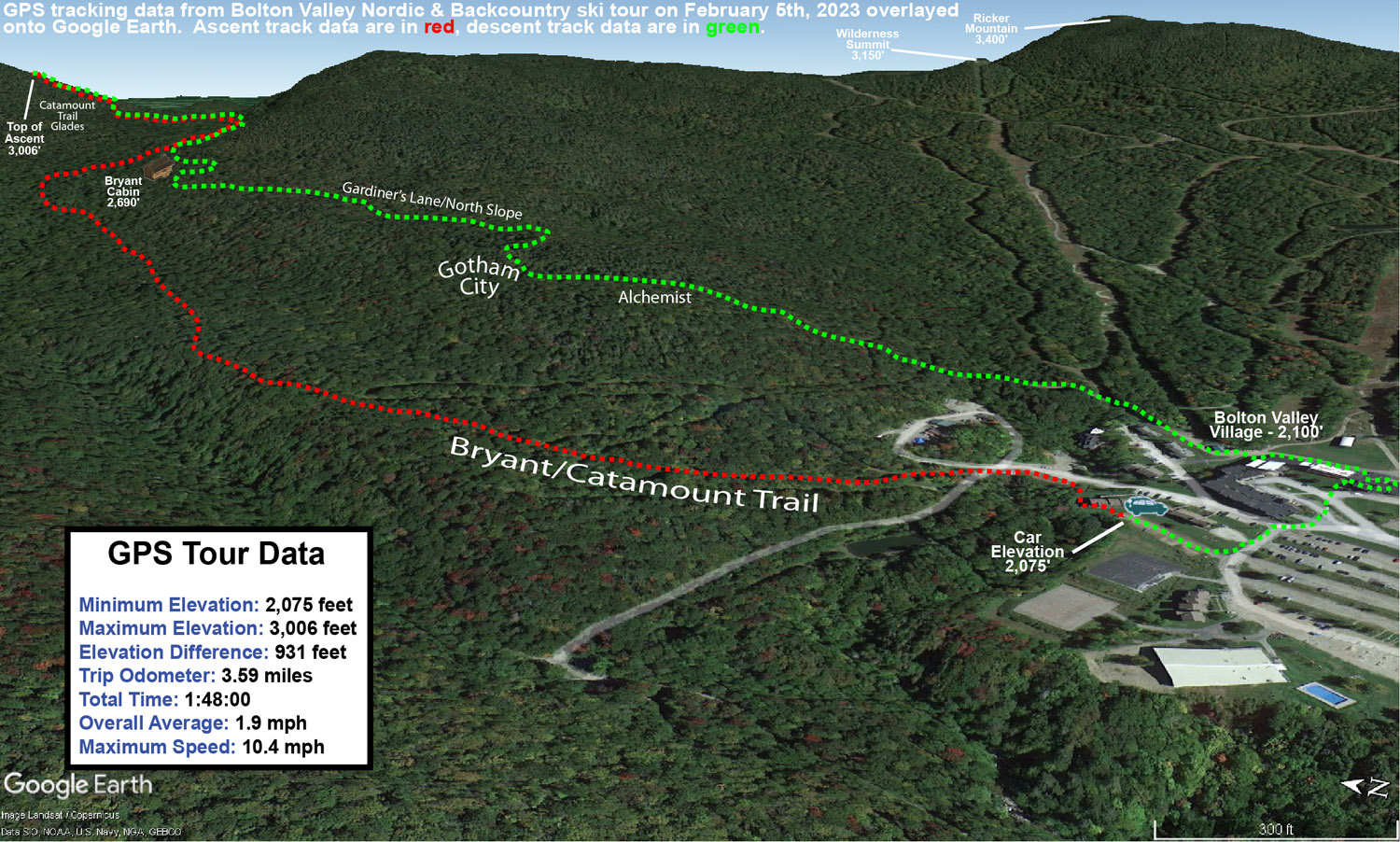
It was hard to get a sense for the total snowpack depth while I was out on my tour because it’s getting too deep to probe easily, but the Mansfield snowpack at the stake is at 42”, so the snowpack depth is probably just a bit less than that as you drop to around 3,000’. While that Mansfield snowpack is a foot below average, we’re getting to the point in the season where being below average is less and less relevant in terms of off piste coverage and skiing quality. We’re past that 40” mark at the stake, and all the terrain I encountered yesterday was game on, regardless of pitch or obstacles. I ran the snowpack liquid analysis this morning down at our site in the valley for CoCoRaHS, and there’s 3 inches of liquid equivalent in our snow. The local mountains probably have double that amount at elevation, so it’s easy to see why the off piste skiing is so good. If you have 6 inches of liquid equivalent under your feet, that’s going to take care of a lot of terrain, even relatively steep terrain.
Overall, today was fantastic, both in terms of the temperatures and in terms of the snowpack/snow quality. Temperatures were in the 25-30 F range when I hit the mountain in the afternoon, which was perfect for comfortable skiing while retaining those soft, midwinter snow surfaces.
